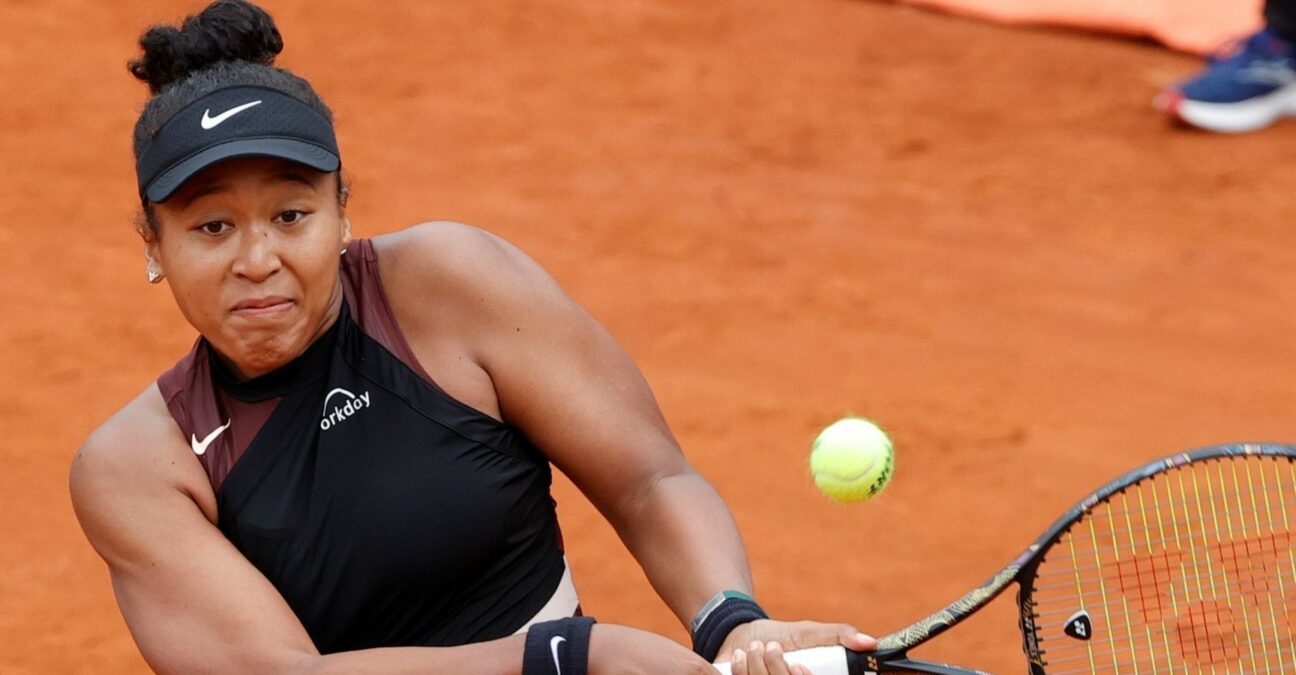“Ostapenko won the French Open, so maybe I should stick to my guns” – Osaka still feeling for best clay-court approach
The four-time Grand Slam champion is playing her first Italian Open in five years, where she is hoping to find her best clay-court form in time for Roland-Garros
 Naomi Osaka, Italian Open, 2024 © Zuma / Panoramic
Naomi Osaka, Italian Open, 2024 © Zuma / Panoramic
It’s been a long time away from the Eternal City for Naomi Osaka.
The last time the four-time Grand Slam champion won a match in Rome, she was the world No 1 and a double-major holder, with both the US and Australian Open titles to her name.
Even back in 2019, Osaka’s relationship with clay was a complicated one, with the Japanese player often struggling to recreate the blistering pace and power that defined her formidable hard-court game.
Fast forward five years, and the former world No 1 has made a winning return to the Italian Open as a wildcard, beating Clara Burel in the first round to record just her second victory on clay this season.
Now reunited with former coach Wim Fissette, Osaka admits that they are still searching for the perfect clay-court game plan to match her big-hitting style.
“It’s been kind of tough for me because when I played my last match in Madrid, I was obviously a lot more defensive than I would have wanted,” Osaka said in her post-match press conference following today’s win.
“To be honest, I’m not sure if that was because of clay court. I think I just wanted to play a little bit more rallies with her.
“Today I told Wim that I wanted to come out a lot stronger. Obviously that didn’t happen. So, yeah, there is a little bit of back and forth with me.”
can first-strike tennis be effective on clay?
While aggressive, first-strike tennis hasn’t typically yielded great success on the clay courts of Europe, lending itself more to quicker hard courts, it is worth noting – as Osaka did – that a former Roland-Garros champion won the title through this attacking, boom-or-bust approach.
“Sometimes I think that Ostapenko won [the] French Open, so maybe I should just stick to my guns,” Osaka continued.
“To be honest, I don’t really try to bang the ball. That’s, like, just what happens. I think for me, I just want to put more spin on it while rotating it a lot more.
“I think when I’m finally able to achieve that, it will obviously be quite heavy, so I thought that will be my clay-court tennis.”
It is interesting to hear a player of Osaka’s calibre still talking about the process of adjusting her game to a particular surface, especially as her previous clay-court results have in actual fact indicated some promise on the surface.
While her last appearance in Rome three years ago ended in an opening-round defeat, Osaka reached the quarter-finals in 2019, as she had done the week prior in Madrid.
osaka still refinding her feet on clay
However, it should be noted that Osaka has been away from clay for the best part of five years now. For a court that was never her favoured surface, such a length of time away means she and coach Fissette are essentially starting from scratch when it comes to building her into an effective clay-courter.
While there is no reason at all why Osaka cannot develop into a fine player on the European dirt, her game style will likely not allow her to reach the heights that fellow WTA player Iga Swiatek reaches on clay, with her topspin heavy groundstrokes and effortless sliding defence.
“I always say this, but I think she’s incredible”, Osaka said of the Pole.
“The way she’s able to maintain being No1 and constantly do well at all the tournaments is something that I honestly can’t think of or can’t fathom back when I was No1 for like five seconds (smiling). Yeah, I mean, I think she’s great for the sport.
“I also think watching Sabalenka doing so well is super, super fun. I hope that I’m able to play them both one day.”
Osaka’s return to tour has been one of the more slow-burning narratives of the 2024 season thus far, but – in time – it will be one of the most fascinating storylines to unfold.
At her free-flowing, big-hitting best, Osaka was close to unstoppable – especially on the hard courts of Melbourne and New York where she is a four-time Grand Slam winner across the two cities.
The clay stretch may not be where the former world No 1’s very best form is reignited, but it will still be a crucial indicator of where her overall game is at.
A good run in Rome or Paris for Osaka should send ominous signals to the rest of the field for once the tours wind back onto hard courts later this summer.
After all, it will surely only be a matter of time before Osaka starts hitting the heights of her golden Grand Slam-winning days once again.
When she does, the natural order that has established itself at the top of the WTA in recent years may well be under real threat.





People in this post
More tennis news
“Shame” – Zverev regrets losing Rio quarter-final to Comesana from a “winning position”

Alexandre Muller defeats Cerundolo, reaches first ATP 500 semi-final

February 22, 2007: The day Wimbledon finally announced it would award equal prize money

Francisco Comesana stuns Zverev to reach Rio final four

Rio Open: Lucky Loser Ugo Carabelli makes semi-finals





